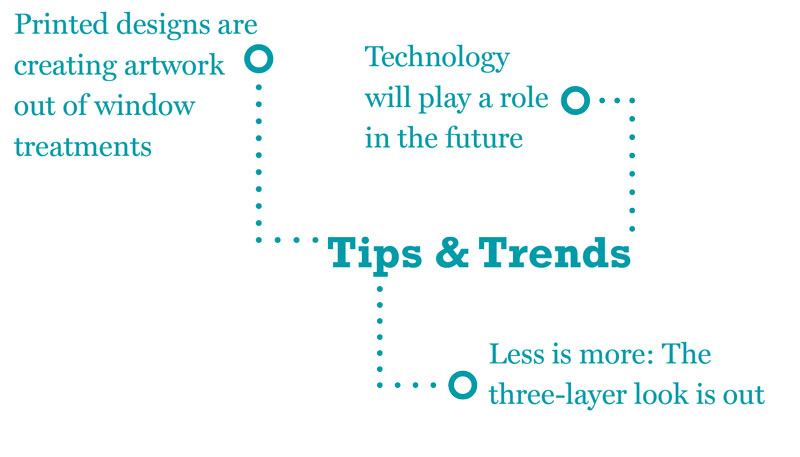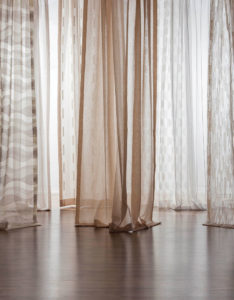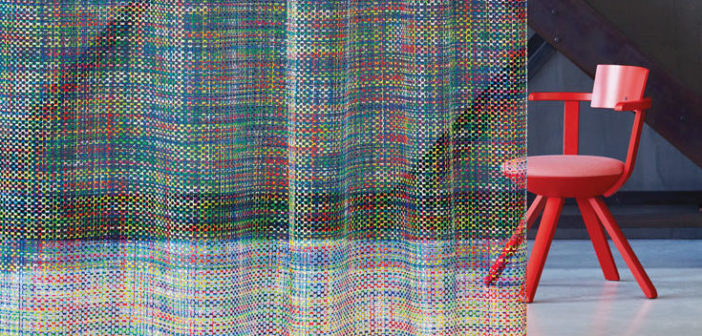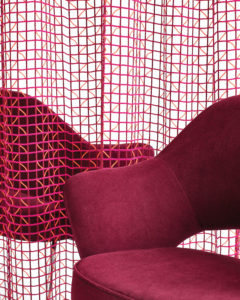 There’s no denying that hotels have upped their game when it comes to design. But, sometimes, it’s not what’s inside, but what’s outside, that counts. A room with a view is what many guests are looking for, but that view can’t be framed by dreary window treatments. Drapery that’s inviting and beautiful—while still keeping out light and sound when guests want a good night’s sleep—are a must.
There’s no denying that hotels have upped their game when it comes to design. But, sometimes, it’s not what’s inside, but what’s outside, that counts. A room with a view is what many guests are looking for, but that view can’t be framed by dreary window treatments. Drapery that’s inviting and beautiful—while still keeping out light and sound when guests want a good night’s sleep—are a must.
“Hoteliers ultimately want to provide guests with a great experience,” said Mary Holt, EVP, creative, Carnegie. “This means creating environments that are both memorable and comfortable, balancing aesthetic appeal with functionality.”
“Most hoteliers are concerned with the functionality of a window treatment—including light leakage, how easy it is for the guest to use, and overall durability,” said Ahmet Sapmaz, VP, global strategic business development, Valley Forge Fabrics.

Many hotels are featuring simpler looks, like a roller shade paired with a sheer, such as these from Charles Samelson Inc
Maria Rodriguez, creative director, Charles Samelson Inc., added that it’s about “decorative looks, high performance and easy maintenance.”
“Window treatments have become simpler, more streamlined,” Rodriguez said. “Gone are the three-layered looks consisting of a drapery, a sheer and a blackout liner; now, you have just a decorative sheer with a liner or a roller shade, or possibly just a decorative roller shade. This partners well with the updated looks of hotel rooms.”
“Artwork in the guestroom is starting to move from the walls to the window,” Sapmaz said. “Printed roller shades are being seen more and more as a part of the room and its design, not just a functional piece of the room.”
“Since the rise of Airbnb, hotel design has moved away from the standardized brand experience toward unique, one-off spaces that offer guests a sense of place and authenticity,” Holt added. “As a result, we’re seeing more and more demand for customization, down to the window treatments. Digital printing techniques offer a versatile solution to this need, allowing sheers and blackouts to be easily printed with designs and color palettes custom-designed to fit a particular concept, space or location. In comparison with traditional printing, digital is not constrained by rollers or screens, making it possible to layer in more colors.”
And it’s not just the guestrooms that hotels have to worry about. The changing landscape of public spaces has changed needs there, too. “Noise reduction is a huge priority for designers as lobbies become even more social spaces for travelers—as well as locals—to work, meet and live,” Holt said. “Acoustic sheers allow light to gently filter through spaces, adding ambiance, while also providing sound-absorbing comfort to noisy, high-traffic areas.”
There are some dos and don’ts when purchasing this product type. “It’s very important to select the right fabric for anything fabricated,” Sapmaz said. “If the fabric cannot hold up to its intended use, the finished product will surely fail in the field.
“Measurement is another crucial part,” he added. “Measurements must be precise and exact to ensure a clean and finished look. For both roller shades and drapery, the mechanisms and hardware is also vital to the usability and functionality of the finished product.”
“For any window treatment, you need to make sure it’s inherently flame retardant,” Rodriguez said. “If you are putting in a roller shade, you get what you pay for, so make sure it’s good quality.”
Looking toward the future, Sapmaz is excited about the introduction of technology to window treatments. “Motorization of drapery will be more prevalent and integrated with virtual assistant and smart technology systems,” he said.
Holt added, “I think we are just beginning to see the possibilities solution-driven design can offer. For example, we have seen experiments with solar window treatments that have the ability to charge your phone, or sustainable textiles that last longer and are easier to recycle—all of which hold the promise of many exciting innovations to come.”



